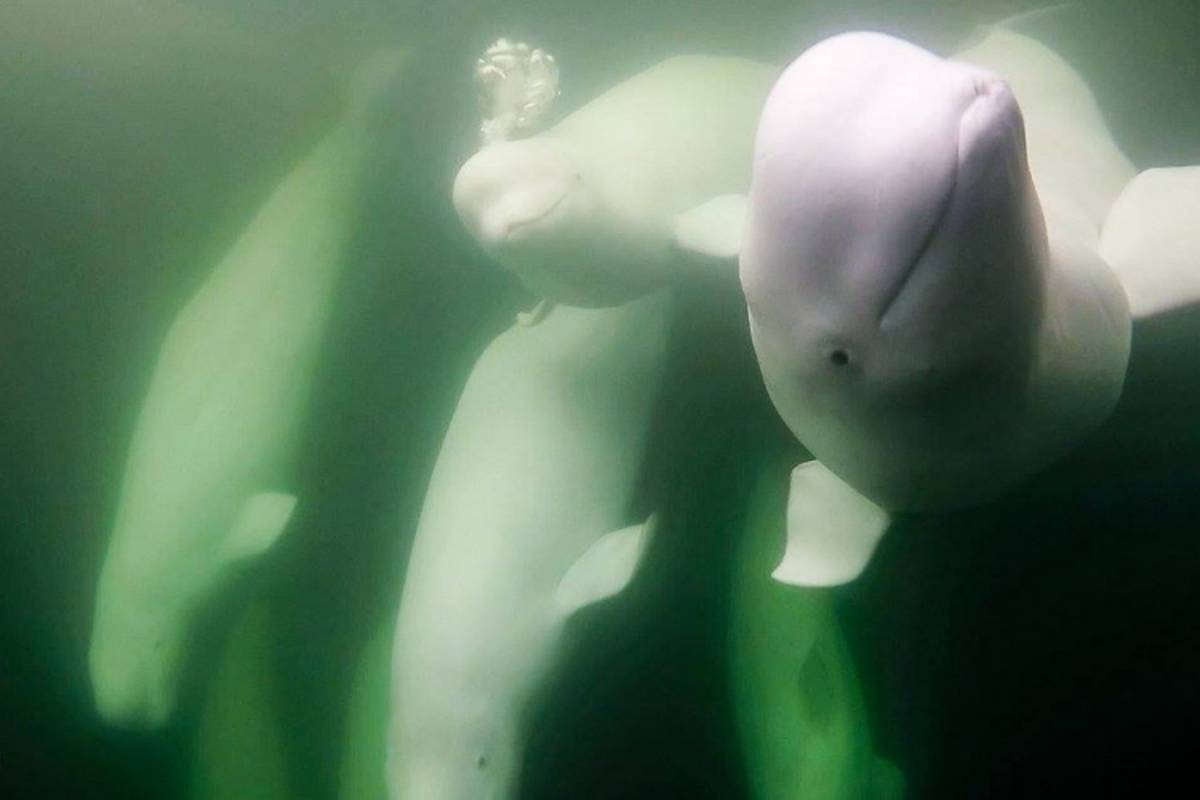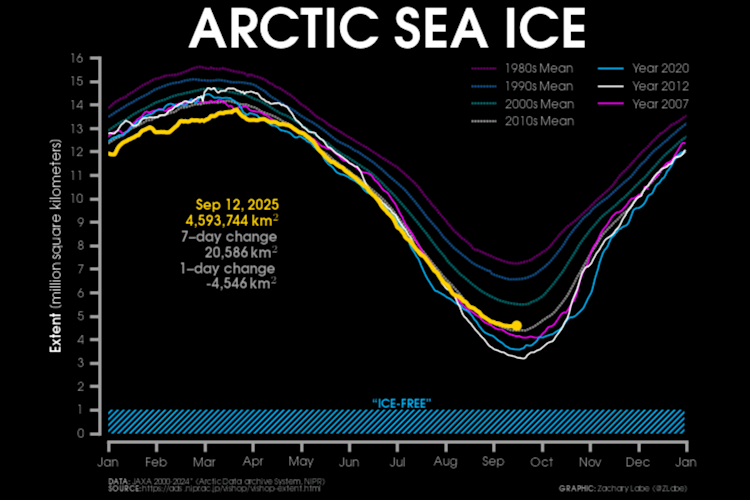Most people know that whales need water to survive. Most people also know that because whales are mammals, they need to rise to the ocean surface occasionally to breathe air. Why, then, would a whale live where sea ice covers the surface of the ocean, and why do some whales rely on the presence of sea ice for their survival? The beluga whale is one such species.
Many creatures depend on sea ice for different reasons. The polar bear uses sea ice as a platform for hunting, traveling, and some reproduction; Arctic seals, like ringed or bearded seals, use sea ice as a platform on which to rest and reproduce. Even northern people rely on sea ice for access to food and traveling. Belugas also need sea ice. They rely on it for feeding and as a place to take cover from predators.
Belugas are part of the food chain that is supported by Arctic sea ice. Sea ice is to the Arctic what soil is to a forest: The ice supports the growth of algae, which feed microorganisms, which feed fish, which feed seals and belugas, which feed polar bears. Belugas rely on this ocean garden for food, just like the many other creatures that have evolved to depend on the sea ice.
Unlike many other whales, belugas lack a dorsal fin. This adaptation allows them to live and feed in areas with Arctic sea ice. With no back fin sticking out, the relatively slow-moving beluga can use the sea ice to hide from the fast orca for two main reasons.
First, because belugas have smooth backs, they can swim close to the sea ice and find breathing holes without getting blocked in by ice chunks. Their predator, the orca whale, does have a dorsal fin, which means orcas can't easily make it to the surface to breathe when there is ice (they risk getting their back appendage caught up in chunky sea ice). Second, because belugas lack a dorsal fin, they're able to retain heat. In contrast, an orca swimming in icy Arctic waters might lose too much body heat through its back fin and not be able to regulate its body temperature.
However, belugas aren't surrounded by ice their entire lives. During ice-free periods in the summer months, about two-thirds of the world's beluga population (approximately 150,000 whales) spend time in more southern Canadian waters. Belugas migrate to areas such at the Churchill River to give birth, molt, and continue to feed, but they still must be aware of predators. The Churchill River is safe is because it is shallow: Belugas can swim in very shallow waters, but orcas cannot.
Historically, orcas were not present in Hudson Bay due to sea ice conditions, but as the climate in Hudson Bay continues to shift and sea ice reduces in extent, there have been more and more reported sightings of orcas in the Churchill region during the summer months. As long as belugas can stay where it's shallow they, and their babies, can stay safe from their orca predators. As temperatures cool, the belugas will travel back north for the winter return to the safe sea ice.
We will keep an eye on the Beluga Cam to see if orcas make an appearance in Hudson Bay this year. Until then, please join us for Arctic Sea Ice Day on July 15th to preserve this habitat that is critical for polar bears, belugas, people, and creatures in between.

















